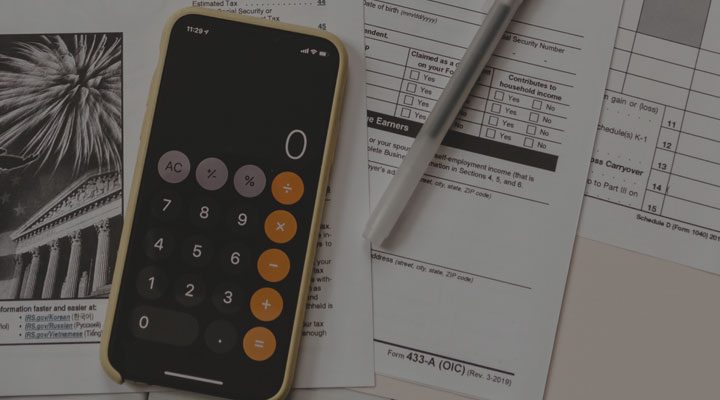Inheritance tax: a UK guide
Home › Inheritance › Inheritance tax
The tax on a person’s estate after they’ve died is called inheritance tax (IHT). While it currently only applies to a small number of UK estates, this is expected to rise over the coming years. The latest government data, from 2023, shows that 41,000 people were liable to inheritance tax in 2022/23, up from 33,000 the previous year – and the highest level in 20 years. In this article, you’ll discover what inheritance tax is, who has to pay it, how it’s calculated and if there are ways you may be able to reduce the amount you’ll pay.
Inheritance tax basics: Inheritance tax (IHT) is a 40% tax on estates over £325,000, with exceptions for spouses and direct descendants.
How to reduce inheritance tax: You can reduce IHT by giving gifts, making charitable donations or using life insurance and trusts to reduce the taxable value of your estate.
IHT on inherited assets: While you don’t pay tax on the inheritance itself, you may need to pay income tax on income generated by inherited assets (e.g., rental income, dividends, or interest).
The information provided here is for informational and educational purposes only and does not constitute financial advice. Please consult with a licensed financial adviser or professional before making any financial decisions. Your financial situation is unique, and the information provided may not be suitable for your specific circumstances. We are not liable for any financial decisions or actions you take based on this information.
What is inheritance tax?
Inheritance tax is a 40% tax applied after a person dies to estates that are worth over £325,000 – or more if a home or the sale proceeds of a home are included.
Inheritance tax is the tax payable on the estate of someone who has passed away. Estates are made up of various assets, for example, money, property, pensions and possessions. How much tax you’ll need to pay will depend on the entire value of the estate.
What happens when you inherit money?
When you inherit money, the process involves several steps. Here's an overview of what happens:
- Executor's responsibilities: The executor of the estate (the person appointed to carry out the deceased’s wishes in their will) is responsible for handling the inheritance tax, paying any debt, and ensuring the correct distribution of the estate. If the estate exceeds the £325,000 threshold, Inheritance Tax is due on the amount above this value. This executor will also apply for a probate and submit the appropriate documents to HMRC.
- Receiving the inheritance: As a beneficiary, you don’t pay tax on the actual inheritance itself. The inheritance is free from tax, but you may have to pay inheritance tax if the total value of the estate exceeds the threshold.
- Income from inherited assets: If inherited assets generate income, such as interest earned from savings accounts, dividends from shares, or rental income from an inherited property, you will need to pay income tax. You must inform HMRC of any income received from the inheritance, typically through a Self Assessment tax return.
- Final step: Once possible taxes are paid and debts settled, the executor distributes the inheritance according to the deceased's will. As a beneficiary, you will receive your share of the estate.
For more information, visit the UK Government Inheritance Tax page and the Executor and Probate page.
Who has to pay inheritance tax?
If the deceased person has left a will, the executor of that will usually arrange payment of inheritance tax. However, if there isn’t a will, it typically falls to the administrator or person in charge of the estate to pay the inheritance tax. There are also ways to pay IHT before you’re legally required to do so. IHT can be paid from funds that come from within the estate or from money raised by selling assets or property.
Most people pay inheritance tax through direct payment schemes. If the deceased had money in a bank account, the person dealing with taxes on the estate can ask for IHT to be paid directly from this account. Alternatively, the person who died may have already taken IHT into consideration. This is usually arranged through a whole-of-life insurance policy which remains active until the holder’s death as long as their premiums are paid.
Do I have to inform HMRC if I inherit money?
In most cases, you don't need to inform HMRC if you inherit money, as the executor of the estate is responsible for handling any inheritance tax and reporting it. Funds from your estate are used to pay inheritance tax to HMRC.
However, if the estate is large and inheritance tax is due, the executor will report it to HMRC. The executor is typically named in the deceased's will, but if there is no will, the court can appoint an administrator to take on this role. Executors can be family members, friends, or professionals like solicitors.
If you are both the executor of the estate and the person inheriting (beneficiary), it is your responsibility to inform HMRC if you inherit money.
When do you have to pay inheritance tax?
Inheritance tax should be paid by the end of the sixth month after the estate holder’s death. If you fail to pay within this timeframe, HMRC may start charging interest. You can also choose to pay tax on certain assets in instalments over and up to 10 years. However, this will incur interest.
In cases where the estate is sold before IHT is paid, the executor must ensure that IHT, including instalments and interest, is paid at the same time. If the executor or administrator pays the inheritance tax from their own account, they can claim this back from the estate.
How much is inheritance tax, and how is it calculated?
The standard rate for inheritance tax is 40%. This only applies when the value of an estate exceeds the UK’s inheritance tax threshold of £325,000 (also known as the nil-rate band). Chancellor Rachel Reeves has announced that this threshold will be frozen until 2030.
Normally, if the value of the estate is below the inheritance tax allowance of £325,000, then beneficiaries won’t have to pay inheritance tax. Any estate you inherit above this amount will be subject to a tax rate of 40%. For example, if you leave behind assets worth £400,000, your estate won’t pay tax on the first £325,000. It will have to pay 40% on the remaining £75,000. This means the inheritance tax will be £30,000.
However, there is no IHT to pay if you pass your assets to your surviving spouse or civil partner, provided they’re living in the UK. You can also transfer any unused amount of your inheritance nil-rate band allowance to them.
If you’d like to calculate the inheritance tax you might need to pay, you’ll find an easy-to-use calculator on the government website.
Passing on a family home
In 2017, the government introduced a new allowance – the Residence nil-rate band (RNRB) – to help more people pass on a family home without paying IHT. The RNRB is set at £175,000 until 2026 and applies where a residence is passed, on death, to direct descendants such as a child or a grandchild.
When added to the main nil-rate band of £325,000, the RNRB effectively increases an individual’s inheritance tax allowance to £500,000 (or £1 million for a couple). However, there is a tapered withdrawal of the RNRB for estates with a net value of more than £2 million.
A measure announced in October 2024 fixes the inheritance tax thresholds at their current levels for tax years 2028 to 2029 and 2029 to 2030. This measure will fix the nil-rate band at £325,000, residence nil-rate band at £175,000 and a residence nil-rate band taper, starting at £2 million. A taper reduces the residence nil-rate band by £1 for every £2 the estate is worth over £2 million.
Do you pay inheritance tax if you inherit your parents' house?
You may have to pay inheritance tax on your parents' house if the estate exceeds the £325,000 threshold (for the 2025/26 tax year).
However, if you inherit a main home and are a direct descendant (like a child or grandchild), you could benefit from the £175,000 residence nil-rate band, this could reduce the amount of IHT payable, potentially allowing you to inherit the home tax-free if the total value of the estate is below the combined £500,000 threshold.
If the estate is below this amount, no inheritance tax is due. No inheritance tax is payable if the house is left to a spouse or civil partner.
How much money can you inherit without paying tax UK?
In the UK, you can inherit up to £325,000 without paying inheritance tax. If the estate is worth more, tax is charged at 40% on the amount above this threshold.
There’s no inheritance tax if you inherit from a spouse or civil partner, and any unused tax-free allowance can be passed on to you.
Can I leave my house to my children without paying inheritance tax?
You can leave your house to your direct descendants such as your child or grandchild without paying inheritance tax if the estate is below the £325,000 threshold or if the £175,000 residence nil-rate band applies, bringing the total tax-free allowance to £500,000. If the estate exceeds this, inheritance tax may be due on the amount above the threshold.
How to avoid 40% inheritance tax
To avoid 40% inheritance tax in the UK, gifts made more than 7 years before death are usually exempt, and you can gift up to £3,000 a year tax-free.
Leaving your estate to a spouse or civil partner is entirely inheritance tax-free. If you leave your home to direct descendants like children or grandchildren, you may qualify for an extra £175,000 tax-free allowance.
If you leave 10% or more of your estate to charitable donations, it can reduce the IHT rate to 36%. Additionally, placing assets in a trust during your lifetime can reduce the value of your estate for IHT.
As everyone’s circumstances are different, speaking to an independent financial adviser can help you with your inheritance and wealth planning.
How much money can you gift to a family member tax-free in the UK?
You can gift money to a family member tax-free in the UK up to a certain amount:
- Gift allowance: You can give gifts to family members worth up to £3,000 per tax year without it being subject to inheritance tax or the value of your estate.
- Small Gifts: You can give up to £250 to as many people as you want to each tax year.
- Wedding gifts: You can gift tax-free gifts to someone as a wedding or the start of a civil partnership. This is up to £5,000 to a child and £2,500 to a grandchild or great-grandchild.
- Spouse or Civil Partner: You can give unlimited gifts to a spouse or civil partner tax-free, as long as they reside in the UK.
The seven-year rule
Any gifts given at least seven years before your death are exempt from IHT. However, gifts made within seven years of your death are added back into your estate for the purpose of inheritance tax.
The amount of IHT payable depends on when the gift was made. Gifts given in the three years prior to your death are taxed at the standard rate of 40%. Gifts given between three and seven years are reduced on a sliding scale in the form of taper relief (see below)
Number of years between gift and death | Rate of IHT payable on gift |
3-4 | 32% |
4-5 | 24% |
5-6 | 16% |
6-7 | 8% |
7+ | 0% |
Other inheritance tax relief and exemptions
Relief may also be available on certain types of properties such as farms, woodland or business assets, in which case you’ll need to file a self-assessment tax return.
Can I reduce the amount of inheritance tax I need to pay?
Reducing IHT can be complex, and it’s important to seek financial advice for your personal situation. There are a few ways you might be able to reduce the amount of inheritance you need to pay, including the following:
- Leaving at least 10% to charity – The rate of inheritance tax is reduced to 36% if you leave 10% or more of your estate to charity.
- Putting your assets into a trust for intended heirs – When you put cash, investments or property into a trust, it effectively no longer belongs to you. Provided certain conditions are met, this may mean these assets fall outside the remit of inheritance tax. You should always speak to a solicitor or financial adviser for tailored advice.
- Choosing to leave your estates to your spouse or civil partner – There is no IHT to pay if your estate passes to your spouse or civil partner. They can also inherit your unused nil-rate band, effectively boosting their own inheritance tax allowance by a further £325,000.
- Paying into pensions instead of savings accounts – Pensions can be a very tax-efficient way of passing on money because, unlike savings, they aren’t included in your taxable estate.
- Make regular gifts – You can give away a total of £3,000 every tax year. You can also make unlimited small gifts of up to £250, while wedding gifts up to a certain limit are also exempt from IHT (see ‘inheritance gifts, exemptions and reliefs’ above).
Using life insurance to pay an inheritance tax bill
If inheritance tax remains a concern, you might want to take out a life insurance policy. While this won’t reduce your IHT liability, it will help to cover some or all of the final bill. Not only will this give you peace of mind, but it can also make matters easier for your family and friends after your death.
Save with Raisin UK
Managing inheritance can involve making important financial decisions. One way to grow your savings to pass on to family members is by placing funds in a fixed term bond. These accounts typically pay competitive interest rates, and you’ll know exactly how much you’ll earn by the end of the term. Apply to open a free Raisin UK Account today, and apply for a savings account that suits you.
Save smarter with the Raisin UK newsletter!
What’s in it for me?
- Receive exclusive updates on market-leading rates
- Ensure you never miss a bonus offer
- Keep your finger on the pulse with the latest financial news


